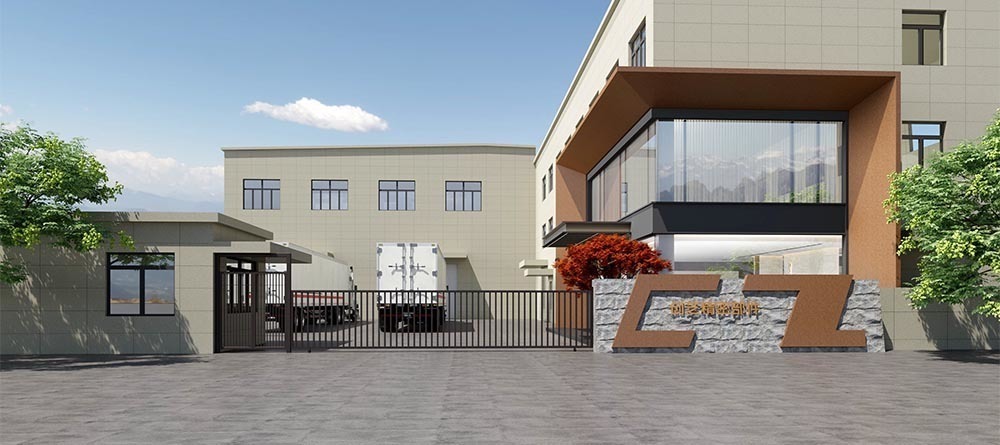
May 22,2024
Machining Surface Roughness and Factors Affecting Surface Roughness
Surface roughness is one of the important marks to measure the quality of the machined surface, which has a great influence on the wear resistance, corrosion resistance, fatigue strength and fit properties of the parts. However, there are many factors affecting surface roughness in processing. In order to achieve good surface roughness, we will understand what these factors are.
Factors Affecting Surface Roughness
One. Causes of rough machining surface
1. Residual area: The residual area is the area that has not been cut off on the machined surface after the cutting of the main and auxiliary cutting edges of the tool.
2. Scales: When cutting plastic metal materials at low speed or medium speed with high-speed steel tools, such as low carbon steel, medium carbon steel, stainless steel, aluminum alloy, etc., fish scale-like burrs are often produced on the processed surface, called scaly. The presence of scale spines significantly increases the surface roughness of the machined surface.
3. Chip accumulation: during the cutting process, when chip accumulation occurs, its protruding part can cut into the workpiece instead of the cutting edge and draw grooves of different depths on the processed surface. When the chip accumulation falls off, some chip accumulation fragments adhere to the processed surface, showing small burrs, resulting in increased surface roughness.
4, vibration: in the cutting process, because the process system produces periodic vibration, so that the processed surface of the streak or ripple marks, so that the surface roughness value increased significantly.
II. Factors Affecting Surface Roughness
All the factors that affect the residual area, debris accumulation, scale thorns and vibration affect the surface roughness.
1, cutting amount: feed rate has the greatest impact on the residual area. The feed rate decreases and the residual area decreases.
When cutting plastic metal, when the cutting speed is very low or very high, the surface roughness value is small. It is due to the low speed when the chip is not easy to produce; high cutting speed, plastic deformation is reduced, can eliminate the production of scales. When cutting brittle materials, the influence of cutting speed is small, and the surface roughness value is also reduced due to the small deformation of the material.
2, tool geometry parameters: the tool tip radius, the main angle and the secondary angle of the residual area and vibration have a great influence. Usually when the nose arc radius increases, the main deflection angle and secondary deflection angle decrease, the surface roughness value is small, but if the machine tool stiffness is low, the nose arc radius is too large or the main deflection angle is too small, because the cutting force increases and produce vibration, so that the surface roughness value increases.
3, tool material: tool material is different, the size of the cutting edge arc radius and keep sharp time is different. High-speed steel cutting tools can be sharpened very sharp, but the holding time is short, so the surface roughness value is small when cutting at low speed. After grinding, the arc radius of the cutting edge of the carbide tool is very large, and the surface roughness value is small at high speed.
4. Workpiece material: When processing plastic materials, the lower the plasticity of the workpiece material and the higher the hardness, the phenomenon of chip accumulation, scale thorns and chilling hardness will decrease, and the surface roughness value will be smaller. Therefore, the surface roughness value of high carbon steel, medium carbon steel and quenching and tempering steel after processing is smaller than that of low carbon steel. When processing cast iron, the surface roughness value of cutting cast iron is larger than that of steel under the same processing conditions because the chips are chipped.
Related News
May 22,2024
High-speed computer gong machine tool function debugging
High-speed computer gongs use precision level and other testing tools, mainly by adjusting the shim iron way to fine-tune the level of the main bed of the machine tool, so that the geometric accuracy of the machine tool reaches the allowable tolerance range;
May 22,2024
CNC lathe processing core maintenance maintenance knowledge
As a precision CNC machine tool, it is necessary to do daily maintenance and maintenance to ensure the normal and long-term stable operation of the machine tool. What knowledge does the processing core have.
May 22,2024
Machining Surface Roughness and Factors Affecting Surface Roughness
Surface roughness is one of the important marks to measure the quality of the machined surface, which has a great influence on the wear resistance, corrosion resistance, fatigue strength and fit properties of the parts. However, there are many factors affecting surface roughness in processing. In order to achieve good surface roughness, we will understand what these factors are.
May 22,2024
Machining automation production line can be in the case of no human intervention in accordance with the provisions of the program or instruction automatic operation or control of the process, the goal is "stable, accurate, fast". At present, it has been used in the production of casting, forging, stamping, heat treatment, welding, cutting and mechanical assembly. Through the use of machining automation production lines can not only liberate people from heavy manual labor, part of mental labor and harsh and dangerous working environment, but also expand the function of human organs, greatly improve labor productivity, and enhance human understanding of the world and the ability to transform the world.









